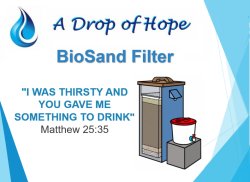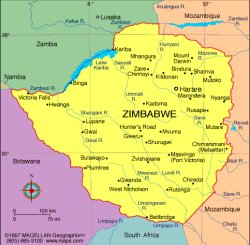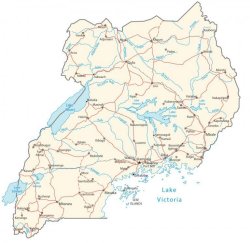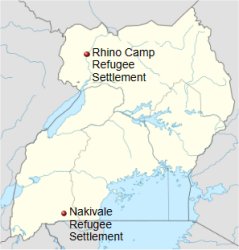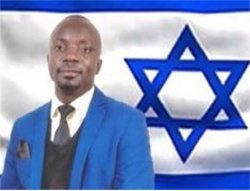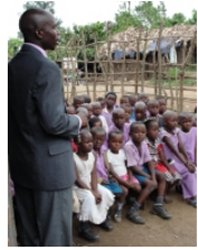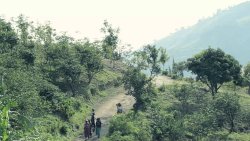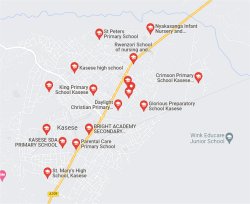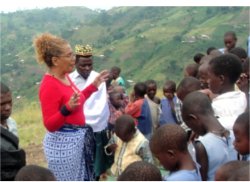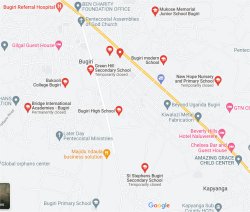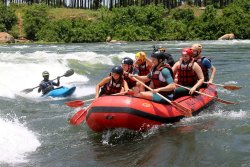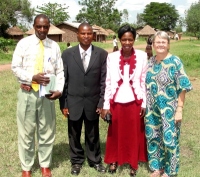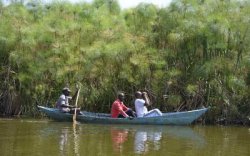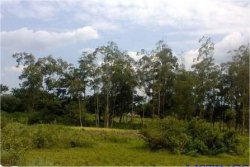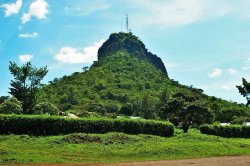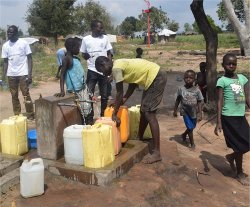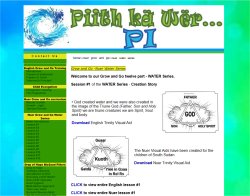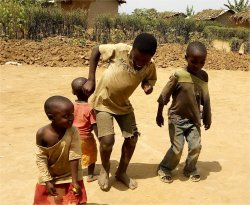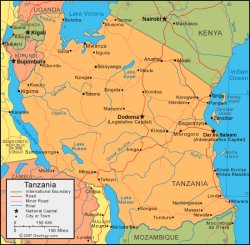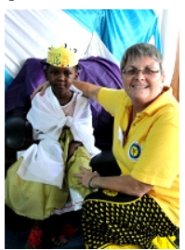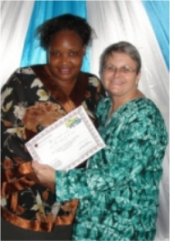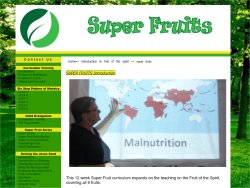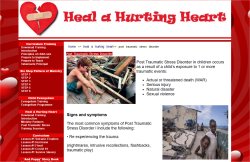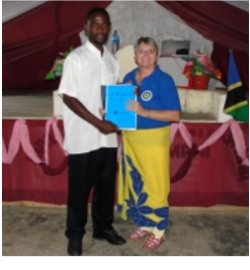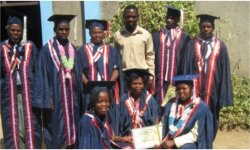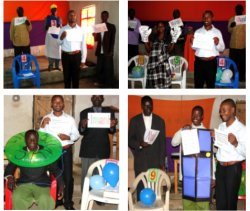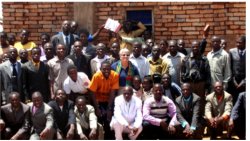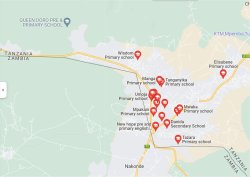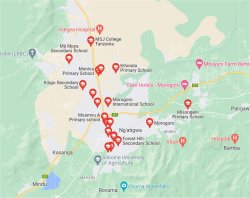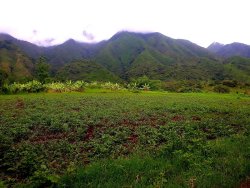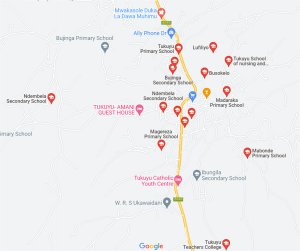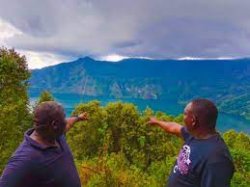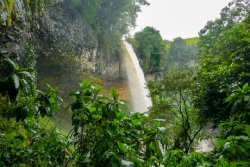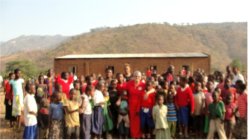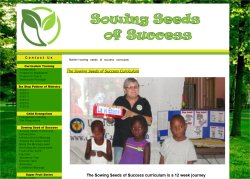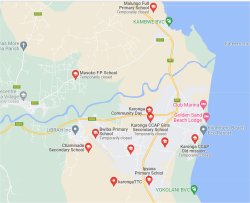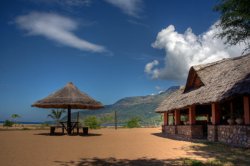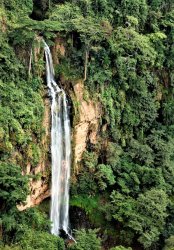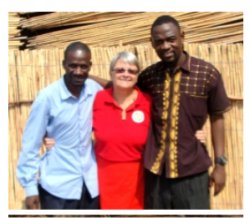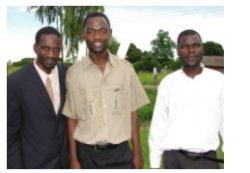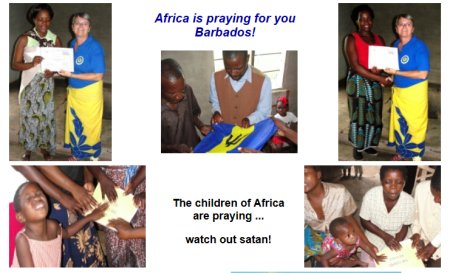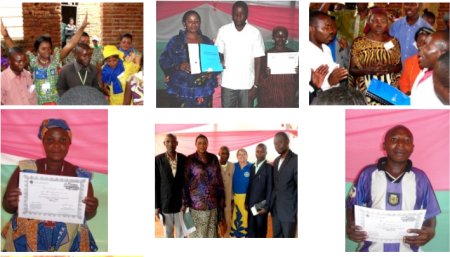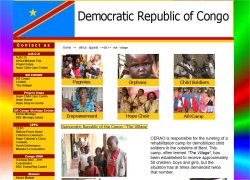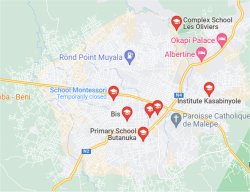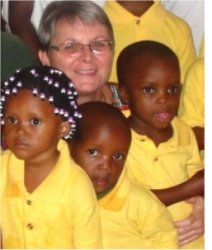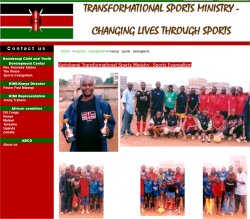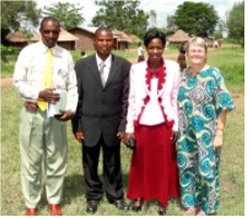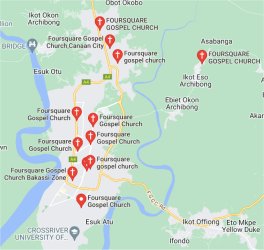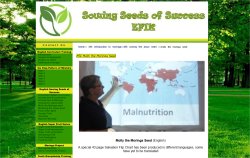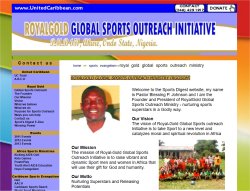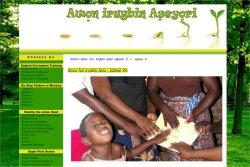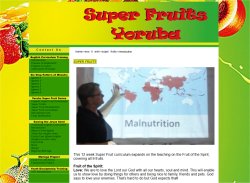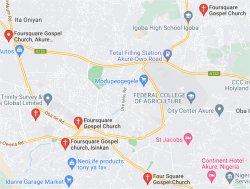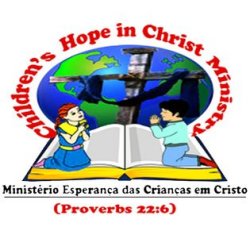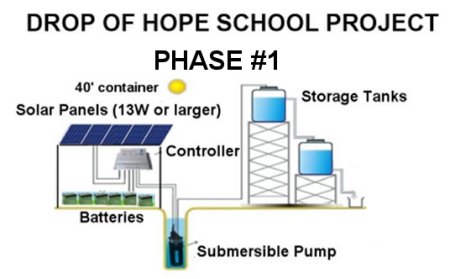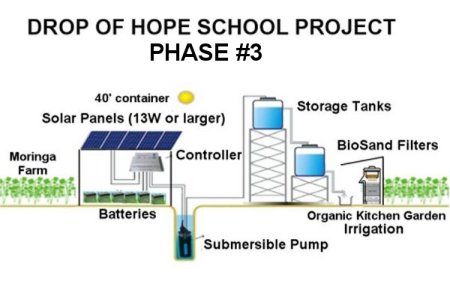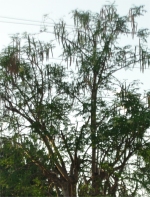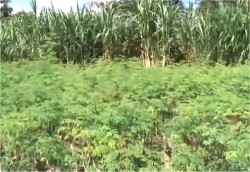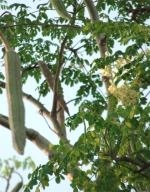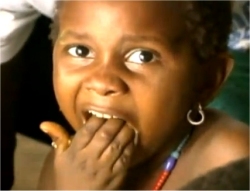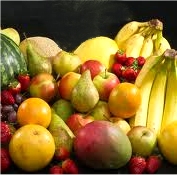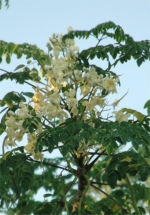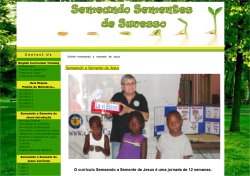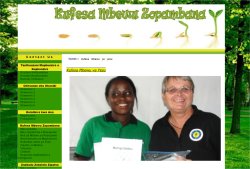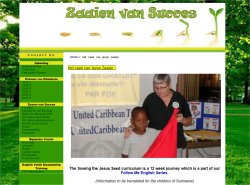 | |
|
UGANDA, will be subdivided into five zones initially:
|
Zone #1: The Capital - Kampala
Zone #2: Western Uganda
Zone #3: Eastern Uganda |
|
Zone #4:
Rhino Camp Refugee Settlement for South Sudan Refugees
Zone #5:Nakivale Refugee Settlement for DR Congo Refugees |
FPPM is fully registered with the ministry of internal affairs under the Non-Governmental Organizations regulation statute 1989 registration number S.5914/6406.
Kampala will be used as our Uganda Headquarters for training the Children's Ministers for establishing a Printing and Curriculum assembly line to enable hundreds of curriuculum to be distributed to the local churches and schools.
Trained in 2011 in the first KIMI three day leadership training.
Jenny returned in 2015 to do further children's ministers training introducing the 'Sowing Seeds of Success' children's curriculum which will be of great value for the 'Drop of Hope School Project' It has now been translated into Swahili to assist with the teaching in East Africa.
|

|
|
Zone #2: Western Uganda - Kasese.
Not forgetting beautiful Kasese high in the mountains in Eastern Uganda. What an honour to at last meet all the mighty men of God in the Full Gospel Kasese Region . |
Pastor Eric the District Overseer, the Full Gospel Assistant Zone Leader Pastor Jack, the Full Gospel District Assistant Supervisor Pastor George and
Full Gospel Zone Leader Pastor Obed
|
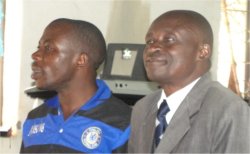
|
|
We look forward to working with all these mighty men of God in Kasese enabling us to train and equip their Child and Youth Ministers to introduce this 'Drop of Hope School Project' into the many Primary schools in this lovely but wounded region.
|
|
I can still remember how beautiful it was as my Mission Partner Lisa was able to share the Good News of Salvation with the children on the moutains in Nyangrong in western Uganda. Another area that we are hoping to introduce the 'Drop of Hope School Project'
|
Zone #3: Eastern Uganda, Three towns have been identified in this Zone.
1. Bugiri spearheaded by Pastors and leaders such as Pastor Paul who was the host Pastor for the Bugiri KIMI training in Uganda assisted by Pastor Patrick Cherop, a teacher by profession and a Pastor by calling. He was my translator at the seventh KIMI PowerClub Leadership Training took place in Bugiri, |
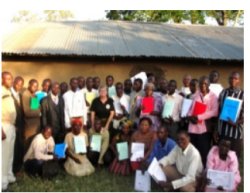
|
|
60 people completed the three days training represented 24 different churches, and again Pastor Patrick was translator on the 2015 Mission Trip.
There are numerous Primary and Secondary schools in Bugiri another perfect location to pilot our 'Drop of Hope School Project' |
20 acres have been identified in Bugiri to be purchased as part of our Goshen Africa Agro Glamping Mission Holiday Uganda destination.
A Moringa Processing Plant will also be established as part of the Mission Holiday humanitarian work experience.
|
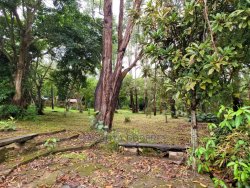 |
Less than an hour and a half away is Jinja a great place for a day trip.
|
Jinja is commonly regarded as " the adventure capital of East Africa " due to the very many activities in town that one could engage in, especially for tourists. Local attractions include white-water rafting, the "Source of the Nile", and bungee jumping. |
Bugiri Real Estate
2. Busia: Jenny
the founder of UCT was joined by Lisa
Gardier
and traveled to Busia a town in Eastern Uganda.
It is the main municipal, administrative and commercial center
of Busia District and the district headquarters are located
there
| 
|
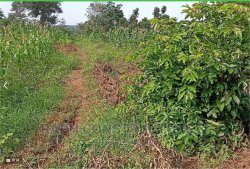 |
17 acres of fertile agriculture land on the outskirts of Busia to be purchased as part of our Goshen Africa Agro Glamping Mission Holiday Uganda destination.
A BioSand Production site will also be established as part of the Mission Holiday humanitarian work experience.
|
| Just an hours drive to Yala Swamp,
a complex of wetlands in the delta of the Yala River, on the north-east shore of Lake Victoria. Yala is a birdwatchers paradise with sightings of the blue breasted bee eater, papyrus gonolek, swamp flycatcher, papyrus canary, white winged warbler, great snapper and baillor's crane. |
|
Busia Real Estate
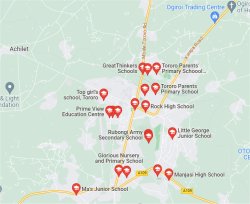
|
3. Tororo, a town in the Eastern Region of Uganda . It is the main municipal, administrative, and commercial center of Tororo District. Tororo has numerous Primary and Secondary schools. ATBS has a Chapter there and this is a perfect location to establish a 'Drop of Hope School Project' pilot programme. |
20 acres of Farm Land for sale in Tororo, easily accessible by both road and railway o be purchased as part of our Goshen Africa Eco/Agro Glamping Mission Holiday Uganda destination.
Tororo Real Estate
|
|
The main tourist attraction is a visit to Tororo Rock a rock formation that serves as the defining feature of the town. It is also a tourist attraction being climbable in around an hour |
|
A special English/Nuer 'Grow and Go' children's curriculum has been developed in preparation for the introduction of our 'Drop of Hope'School project in this centre.
|
|
A special French/Lingala 'Grow and Go' children's curriculum has been developed in preparation for the introduction of our 'Drop of Hope'School project in this centre. |
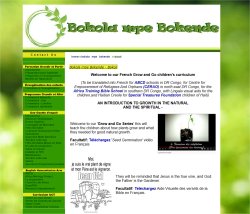
|
A French 'Heal a Hurting Heart' Post Traumatic Stress curriculum for Child Soldiers has been created to help in the healing process of the many child soldier refugees in this Settlement |
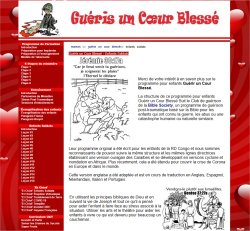
|
TANZANIA will be subdivided initially into two Phases.
|
Phase #1
- Dar Es Salam, the capital
- Mbeya in south west
- Tunduma
on the border between Tanzania and Zambia.
Phase #2
|
Phase #1: Zone #1 - Dar Es Salam, Tanzania Calvary Tabernacle Church hosted the Dar Es Salaam KIMI three day PowerClub leadership training and one day Child Evangelism program. 80 new PowerClub leaders were trained with over 30 new PowerClubs birthed. |
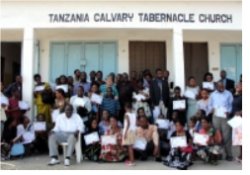
|
The KIMI Dar Es Salaam coordinator - Pastor Imanuel Mwamakola is one such leader.
Seen here on right, with Bishop David Akondowi and Evangelist Jenny
|
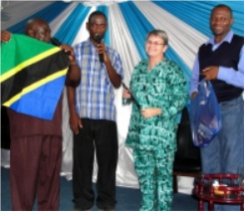
|
|
We will be identifying gifted Children's Ministers people like Minister Suma to be a part of our Kids Discipleship Training (KDT) programme. Suma was one of the students we trained all those years ago, a qualified teacher and we are believing God that she will help us to get the programme into the local schools in Dar Es Salaam and be a part of our KDT.
|
Kids Discipleship Training (KDT)
AIMS AND OBJECTIVES:
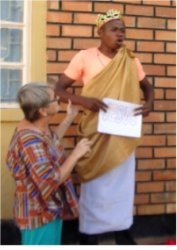
|
To establish an inhouse Kid's Discipleship Training Headquarters in Barbados to facilitate three, 3 month semesters per year for local Barbadian, Caribbean, Haitian and African Children's Ministers.
Sponsored to come to Barbados for the three months to be trained in a variety of different areas including:
|
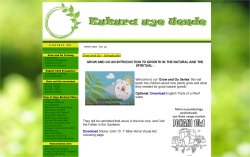
|
Trained in all of our UCT Curriculum
|
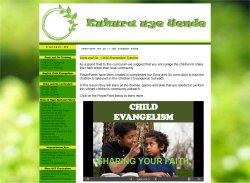
|
Trained in Children's Evangelism
|
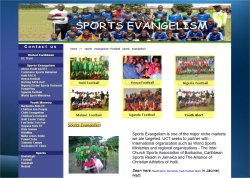
|
Trained in Kids Sports Evangelism
|

|
Trained in Youth Sports Evangelism
|
To be taught, equipped, empowered and ordained as Children's Ministers.
Then return to Africa to be employed by ABCD to teach others leaders and Sunday School Teachers expanding the scope and advancing the Kingdom of God.
|
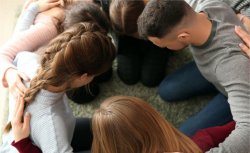
|
And the things that you have heard from me among many witnesses, commit these to faithful men who will be able to teach others also.
(2 Timothry 2:2)
Bishop David is the Dean and the Executive Director of the African Training Bible School (ATBS) now reaching around 400 pastors in four countries of Africa, Tanzania, DR Congo, Malawi and Zambia.
|
|
|
Working with wonderful young men such as Teacher Nicodemus Kasumba who came to Mbeya to go thought the KIMI Leadership training in Mbeya in preparation for his translation duties in Tunduma.
|
He worked with Jenny in the fifth KIMI PowerClub Leadership Training in Tanzania with 127 new PowerClub leaders trained and over 30 churches represented. |
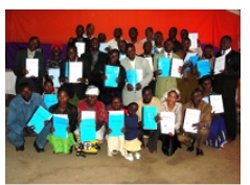
|
|
On the fourth day of training he was actively involved in the Children's Evangelism training of the FunTastic Fun Fair .
|
Mbeya will be used as our Tanzania Headquarters for training the Children's Ministers from Malawi, Zambia, DR Congo (Southern Zone) for establishing a Printing Press and Curriculum assembly line to enable hundreds of curriuculum to be distributed to the local churches and schools.
SCHOOLS IN MBEYA: 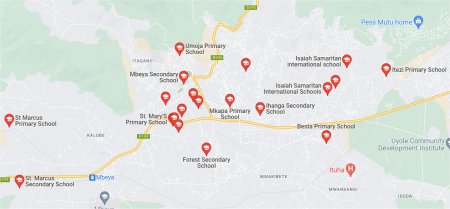
Phase #1 - Zone #3: Tunduma
Pastor Maiko was selected as the KIMI Tunduma Coordinator and he is seen here distributing the KIMI manual and curriculum. Thanks to all that worked so hard to translate this material and everyone that sponsored the printing of this material.
|
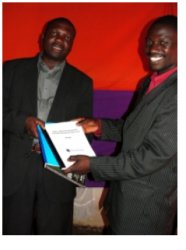
|
|
Connections like these will be invaluable when it comes to introducing our 'Drop of Hope School Project' into the many Primary schools in Tunduma.
|
Phase #2
- Zone #1 Morogoro
- Zone #2 Tukuyu
- Zone #3 Chunya
Phase #2- Zone #1 Morogoro
A city in the eastern part of Tanzania 196 kilometres west of Dar es Salaam. The capital of the Morogoro Region. ATBS has a vibrant chapter and we are considering it as part of our second phase for the 'Drop of Hope School Project' due to the number of schools in the area as well as an Agriculture College |
|
|
Phase #2 - Zone #2 Tukuyu
Tukuyu is home to another ATBS, it is a small hillside town that lies about 36 miles south of the city of Mbeya, at an elevation of around 5,000 ft in the highland Rungwe District of southern Tanzania. |
|
Tukuyu has numerous Primary and Secondary schools it even boasts a Teachers College.
ATBS has a chapter there and we are considering it as part of our second phase for the 'Drop of Hope School Project' |
Working in association with one of our Goshen Africa Glamping Mission Holiday Tanzania Eco destinations.
We are hoping to source around 20 acres in this beautiful area.
|
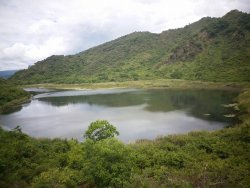
|
|
Tukuyu is known for some of its popular attractions, which include: Mount Rungwe hiking and birdwatching, Malasusa Falls, Malamba Waterfalls, Henry Mokiwa and the famous Kaporogwe water falls.
|
|
Kaporogwe water falls is one of the notable tourist attractions in Mbeya region, where there's a natural huge water drop approximately 18km from the small town of Tukuyu. The falls is well decorated by the presence of a cave which provides an entrance for tourists to enjoy the visibility of these catastrophic falls from within .
|
Phase #2 - Zone #3 Also included in Phase #2 is the Chunya ATBS, Chunya District one of the eight districts of the Mbeya Region of Tanzania.
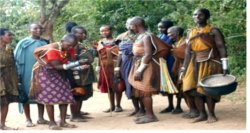
| These tribes are un reached tribes according to Joshua projects and the ATBS Chunya Center is very vital in the area. |
We are delighted to include them in this Phase #2 of the 'Drop of Hope School Project' and with the numerous Primary schools in the area it is an excellent choice. |
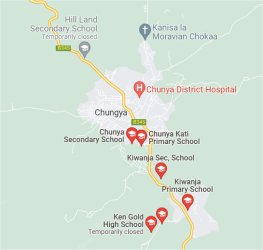
|
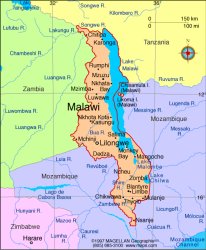
|
MALAWI
a landlocked country in southeastern Africa, is defined by its topography of highlands split by the Great Rift Valley and enormous Lake Malawi.
|
1. Karonga
Pastor Sam is our KIMI Karonga Coordinator, Pastor Sam, a retired Principle of a school is committed to teaching children the meat and deeper truths of God's Word by going beyond the basic Bible stories. |
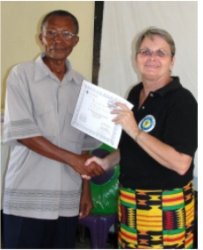
|
|
These Bible Stories will be taught in our Introductory Child Evalgelism 'Go and Grow' curriculum, our 'Sowing Seeds of Success' and the 'Super Fruit' agricultural curriculum, these will enable us to get our 'foot in the door' to many schools, then progressing to the KIMI curriculum, all to be translated into the different languages.
|
Equipping the children for the work of the ministry and creating an atmosphere and opportunities where they can experience the presence of God on a regular basis.
All of our Child Ministers involved in our KDT will be trained in the School of Supernatural Children's Ministry | 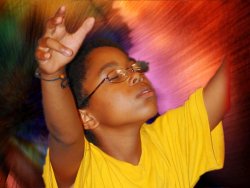
|
| ATBS has a chapter in Karonga and with the numerous Primary Schools it is an ideal location to launch our Malawi 'Drop of Hope School Project' |
|
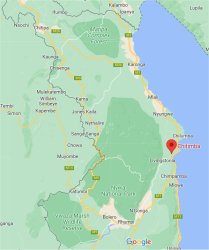
|
Working in association with one of our Goshen Africa Glamping Mission Holiday Malawi lakeside destinations.
Such as the Resort
on the northern shores of Lake Malawi, the Chitimba Camp is for sale. Chitimba is a village situated 122 km south of the Malawi/Tanzania border at Karonga ideally located to our 'Drop of Hope School Project' at Karonga.
|
The lodge/campsite is set on a beautiful golden sandy beach, amongst banana palms and papaya trees, surrounded by the famous Livingstonia and Nyika mountains. Malawi Real Estate
| |
Activities include day hikes to Manchewe Falls, Livingstonia and Mount Chombe.
Surrounded by lush rainforest in Livingstonia, Manchewe Falls is the highest waterfall in Malawi at 125 metres high. | |
DR CONGO, will be subdivided initially into two Zones.
- North Kivu
- Katanga in the south (Lumumbashi)
|
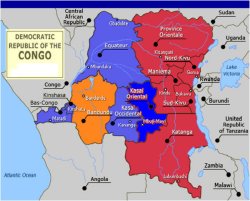
|
North Kivu Zone #1 is a region from Goma in the south to Beni in the north where
KIMI leadership training was hosted by CEPCI and mobilized by Pastor Abraham to make it a wonderful success with 75 people attending representing 46 different churches.
Working alongside the 'Centre for Empowerment of Refugees And Orphans' (CERAO) is a Congolese non-governmental organization, founded on March 30th 1996 in Goma.
The Chief Executive Officer is Bishop Shandwe Luanda Pinos who is also a Trustee of ABCD. |
|
|
With the number of Primary schools in Beni this is aother area that we are hoping to introduce the 'Drop of Hope School Project'
|
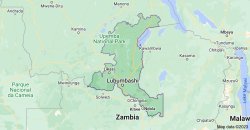
|
Zone #2 is located in Katanga one of the 21 new provinces of DR Congo located in the deep south. The African Bible Training School has a Chapter in Lumumbashi
|
ZAMBIA:
Zone #1 Isoka
Isoka is a town located in the Muchinga Province of Zambia near the borders with Tanzania and Malawi.
The team from Zambia traveled to Dar Es Saleem for the KIMI Leadership training which was hosted in Calvary Tabernacle Church thus spearheading the PowerClub move into the Zambian churches coming under the cover of Bishop and a pilot project in the school owned and run by his wife also present at the training seen here receiving her curriculum. A Chichewa translation is being worked on as well. |
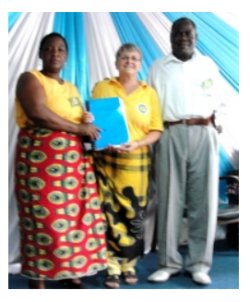
|
NIGERIA: Cross River
Partnering with the
Foursquare Churches in Cross River we are believing God to establish numerous Drop of Hope School Projects in this south east region.
Foursquare is an International Evangelical Pentecostal Christian denomination founded in 1923 by preacher Aimee Semple McPherson. | |
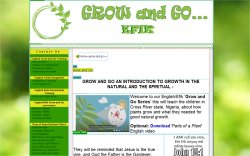
|
English curriculums with Efik Bible Verses and Visual Aids for the children of Cross River Nigeria are being developed.
Including:
|
NIGERIA: Akure, Ondo State Akure is a city in south-western Nigeria. It is the capital and largest city of Ondo State
|
Partnering with Pastor Blessing P. Johnson the Founder and President of RoyalGold Global Sports Outreach Ministry nurturing sports superstars in a Godly way. Another excellent connection for advancing the Kingdom in Akure, south west Nigeria.
|
English curriculums with Yoruba visual aids for the children of Nigeria are being developed.
Including:
'Grow and Go' English/Yoruba Curriculum
|
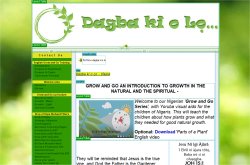
|
|
THE PROJECT
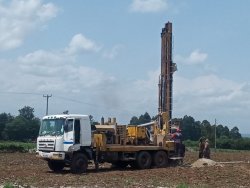
|
Phase #1 will be to establish a bore-hole following a geological survey to confirm water availability.
Before commencing drilling, a bore-hole needs a drilling permit and an environmental report.
Once drilled, the bore-hole must be lined with steel casing to stop the bore-hole collapsing and to screen out the large sand particles from entering the pump. |
Installation of the pump:
The cost of solar has decreased over the years so the main choices now are solar verses grid electricity. The higher initial cost of solar will be offset long term by the lower running costs. Sunlight in Africa is very reliable and very predictable. Countries on the equator are not short of sunlight!
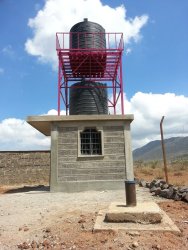
|
Tanks:
Solar only produces water when it is sunny or bright. To match supply to demand, it is usual to add water tanks. In this case, 2 tanks were added, both 5000L each. The top tank is used to gravity feed water to the school and the bottom tank supplies water to the community taps. If both tanks are empty, it will take about 1 day of sunlight to fill them. |
Solar panels and controller.
Investment into a 40 ' Energy Container for uninterrupted off-grid power supply
intechcleanenergy.com
The Intech Energy Containers is a solution to deliver energy to rural areas. Each container is equipped with a photovoltaic system and a lithium-ion battery backup. Every system comprises a monitoring system which allows the customers but also Intech īs engineers to access the data online.
|
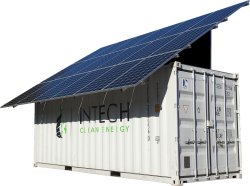
|
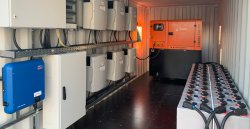
|
All Intech Energy Containers are pre- assembled, pre-tested and pre-configured before shipment which ensures a fast and cost-efficient implementation.This will not only power the pump but provide a flood light sports playing field in Phase #3 |
Information sourced from www.osiligi.org
DEVELOPMENT OF A BIOSAND FILTRATION (BSF) STATION
Embedded Microsoft Office presentation, powered by Office.
The BSF is a household water filter that makes dirty water safe to drink. This particular type of filter is an adaptation of the traditional slow sand filter, which has been used for community water treatment for almost 200 years.
The BSF is smaller and adapted for intermittent use, making it most suitable for households, typically around five people. In the case of a school it should serve 10 to 15 children for thier time at school.
A bank of BSF's would need to be installed to serve the children's needs |
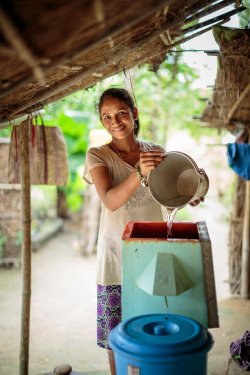
|
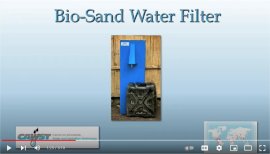
|
Optional: Download English Introduction to the BioSand Filter video
|
KITCHEN GARDEN PROGRAM
An organic kitchen garden will be established behind the BSF shed, catchment water from the roof can be used to irrigate the garden.
|
The Kitchen Garden Program is a fun, hands-on learning program delivering pleasurable food education. With strong curriculum integration and a focus on student wellbeing, collaboration and leadership, students learn to grow, harvest, prepare and share fresh, seasonal, delicious food - forming positive food habits for life.
www.kitchengardenfoundation.org.au |
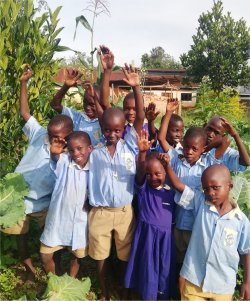
|

|
This will be a conduit to enable us to introduce into these schools our 'Grow and Go' Children's Curriculum in their local dialect. Teaching the children how plants grow and what they need for good natural growth - which includes light and water. |
Including introducing the BioSand Filter and educating them on the use and maintenance in a fun way that is suitable for the children's level of education.
Enabling us to also introduce them to the 'Living Water' and the 'Light of the World'
An English version with SHONA visual aids has been created for the children of Zimbabwe. |
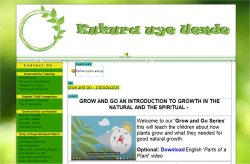
|
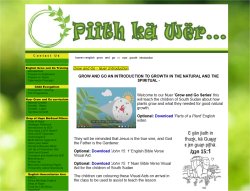
| An English version with NUER visual aids has been created for the children of South Sudan |
This 20 Session educational and empowering children's curriculum has already been translated into SWAHILI for Tanzania, Kenya, Uganda, Rwanda, Burundi, South Sudan, Mozambique, Malawi and Zambia. |
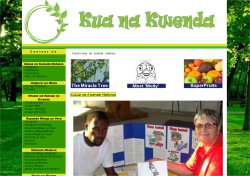
|

|
We are working on the PORTUGUESE version for the children of Mozambique and for the children of Brazil and
Venezuela
|
As well as in FRENCH the official language in Burundi, Cameroon, the Central African Republic, Chad, the Democratic Republic of Congo within Africa but also in Haiti, where Haitian Creole visual aids and videos have been created for the Haitian children. |
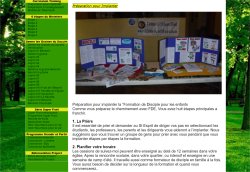
|
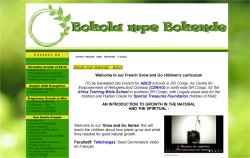
|
As well as a French version with LINGALA visual aids for the children of the Central African Republic, |
The DUTCH visual aids have been completed awaiting translation for use in Suriname and in the future in places like
Aruba, Curaçao and St Maarten. |

|
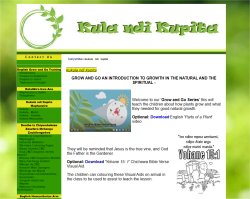
| An English version with CHICHEWA visual aids has been created, awaiting translation for the children of Malawi. |
What a wonderful way to establish our Organic School Kitchen Garden Project - Food For Life as well as provide clean drinking water and Living Water all through our Uganda registered charity the Africa Bureau of Children's Discipleship (ABCD). |
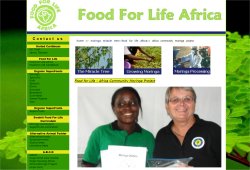
|
|
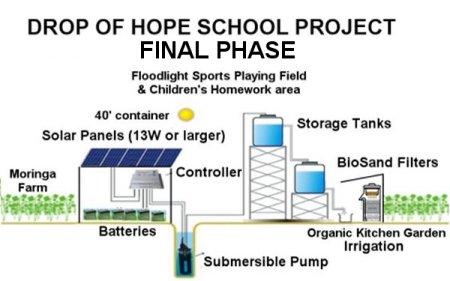
|
ESTABLISHING A MORINGA FARM
 |
For centuries, the natives of northern India
have known of the many benefits of Moringa oleifera. Its
uses are as unique as the names it is known by, such as
Horseradish tree and Drumstick tree (referring to the large
drumstick shaped pods) and in East Africa it is called "Mother's
best friend”. In Haiti it is referred to as Biolive
(due to the oil extracted from the seeds)
|
In Africa Moringa trees have
been used to combat malnutrition, especially among infants
and nursing mothers.
Three non-governmental organizations in particular
- Trees for Life, Church World Service and Educational Concerns
for Hunger Organization - advocate Moringa as “natural
nutrition for the tropics.” |
|
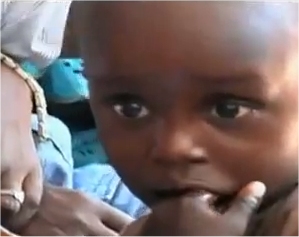 |
Leaves can be eaten fresh,
cooked, or stored as dried powder for many months without
refrigeration, and without loss of nutritional value. Moringa
is especially promising as a food source in the tropics
because the tree is in full leaf at the end of the dry season
when other foods are typically scarce.
|
| Analyses of the leaf composition
have revealed them to have significant quantities of vitamins
A, B and C, calcium, iron and protein. According to Optima of
Africa, Ltd., a group that has been working with the tree in
Tanzania, "25 grams daily of Moringa Leaf Powder will give
a child" the following recommended daily allowances: |
|
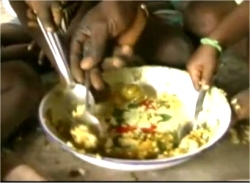 |
-
Protein 42%,
-
Calcium 125%,
-
Magnesium 61%,
-
Potassium 41%,
-
Iron 71%,
-
Vitamin A 272%,
-
Vitamin C 22%.
|
These numbers are particularly astounding;
considering this nutrition is available when other food sources
may be scarce.
Scientific research confirms
that these humble leaves are a powerhouse of nutritional value.
Gram for gram, Moringa leaves contain:
- SEVEN times the vitamin C in oranges,
- FOUR times the Calcium in milk,
- FOUR times the vitamin A in carrots,
- TWO times the protein in milk
- THREE times the Potassium in bananas.
|
|
The Moringa tree has great use medicinally both as preventative
and treatment. Much of the evidence is anecdotal as there has been
little actual scientific research done to support these claims.
India's ancient tradition of ayurveda says the leaves of the Moringa
tree prevent 300 diseases. One area in which there has been significant
scientific research is the reported antibiotic activity of this
tree.
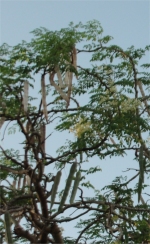 |
The immature pods are greatly valued and
widely used. The pods are extremely nutritious, containing
all the essential amino acids along with many vitamins and
other nutrients. The immature pod can be eaten raw or prepared
like green peas or green beans, while the mature pods are
usually fried and possess a peanut-like flavor.
|
|
|
The pods also yield 38 - 40% of non-drying,
edible oil known as Ben Oil. This oil is clear, sweet and
odorless, and never becomes rancid. Overall, its nutritional
value most closely resembles olive oil. |
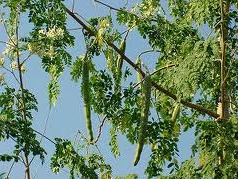
|
The leaves are
eaten as greens, in salads, in vegetable curries, as pickles
and for seasoning. They can be dried and pounded and sprinkled
over food or added to milk. Leaves and young branches are
relished by livestock. In developing tropical countries.
|
Moringa trees have been used
to combat malnutrition, especially among infants and nursing
mothers.
SOWING SEEDS OF SUCCESS
Enabling us the opportunity to introduce our 12 session ' Sowing Seeds of Success' Moringa children's curriculum into the schools taking part in our 'Drop of Hope School Project' |
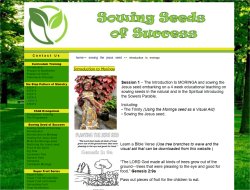
|
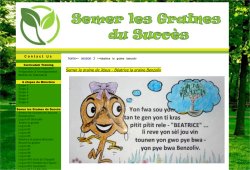
|
A French version has been translated with Haitian Creole visual aids and Bible Verse take home tracks for the children of Haiti. |
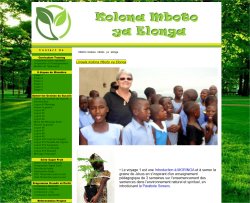
|
A French version has been translated for the children of DR Congo with Lingala Bible Verse visual aids. |
| A Swahili version has been translated for the children of Tanzania, and East Africa. |
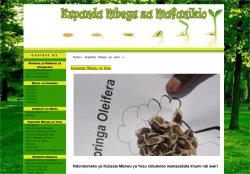
|
Learn more about the uses of Moringa including water purification.
Sediment Your Water - Using Seeds
|
Optional: Download 'Sediment your water using Moringa seeds' Shona poster to assist with teaching the children in Zimbabwe.
|
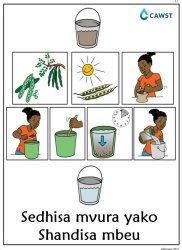
|
|
Optional: Download 'Sediment your water using Moringa seeds' poster to assist with the teaching.
Optional: Download 'Sediment your water using Moringa seeds' 'Educational Handout for the parents or guardian. |
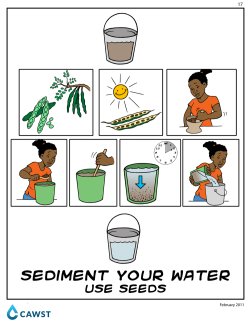
|
Key Message: Different seeds can be used to help remove sediment from your water.
Possible Questions:
• Have you ever used seeds to sediment your water?
• If yes, how do you usually use seeds?
Content:
The first step in treating your water is to perform sedimentation. When our water is dirty we need to sediment it. Microbes like to stick to sediment, so by removing the sediment we are removing microbes.
|
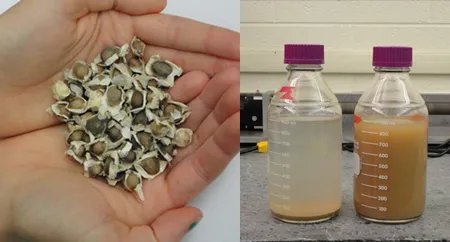
|
We can sediment our water using seeds. Different seeds are used in different countries and regions. Some seeds that can be used for sedimentation are: Fava Beans (Latin America), Moringa (Africa, Caribbean and parts of Asia) |
There are different ways people use seeds to sediment their water. Explain how to use the seeds available in your area.
One way is to do the following steps:
• Let the seeds dry out in the sun
• Grind up some seeds
• Add a handful of ground seeds to a bucket of dirty water
• Stir the water with a spoon or stick for a few minutes
• Let it settle for a couple of hours
• Pour the clear water into a clean storage container
The seeds will be left at the bottom of the bucket. They should be thrown out with the rest of the household garbage.
By using sedimentation, we are helping to get better water. We still need to filter and disinfect our water after using seeds.
Check for Understanding:
• Why would you want to use seeds?
• How would you use seeds to sediment your water?
• Is the water safe to drink after sedimentation?
Information sourced from CAWST.org
SOWING SEEDS OF SUCCESS - MORINGA CURRICULUM
|
|


